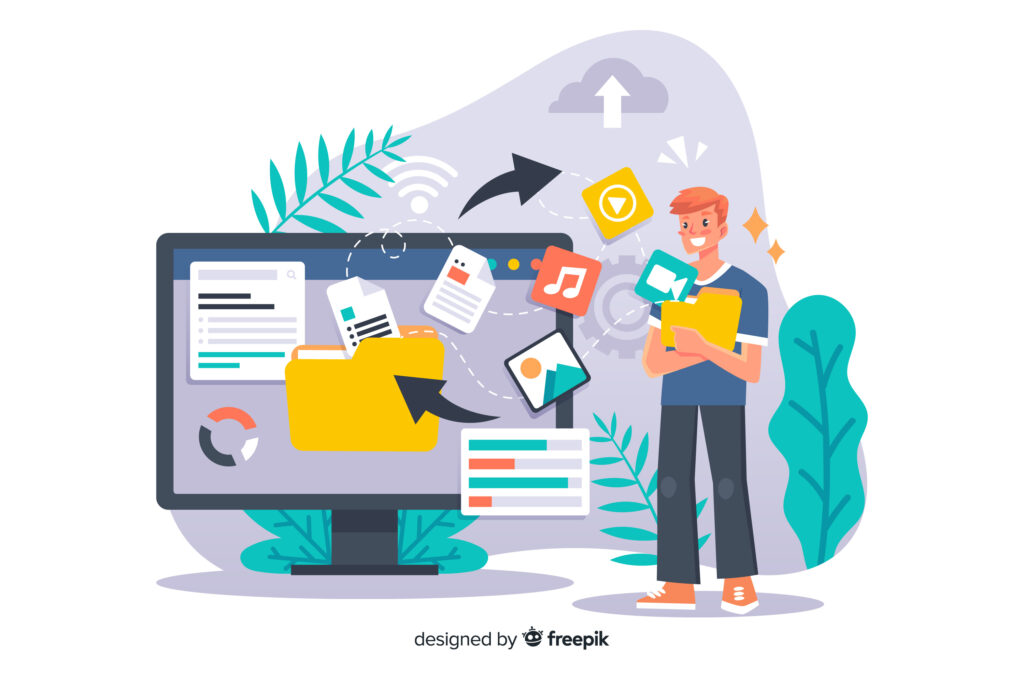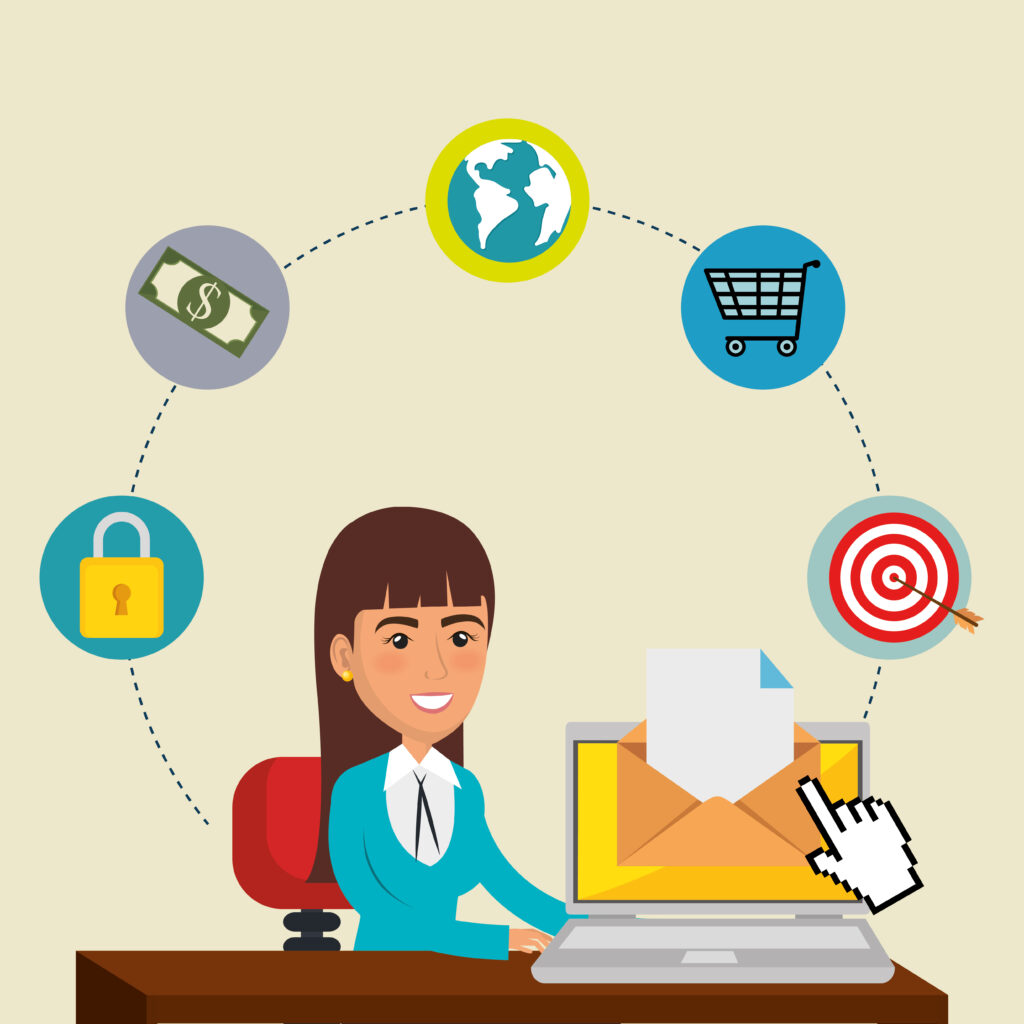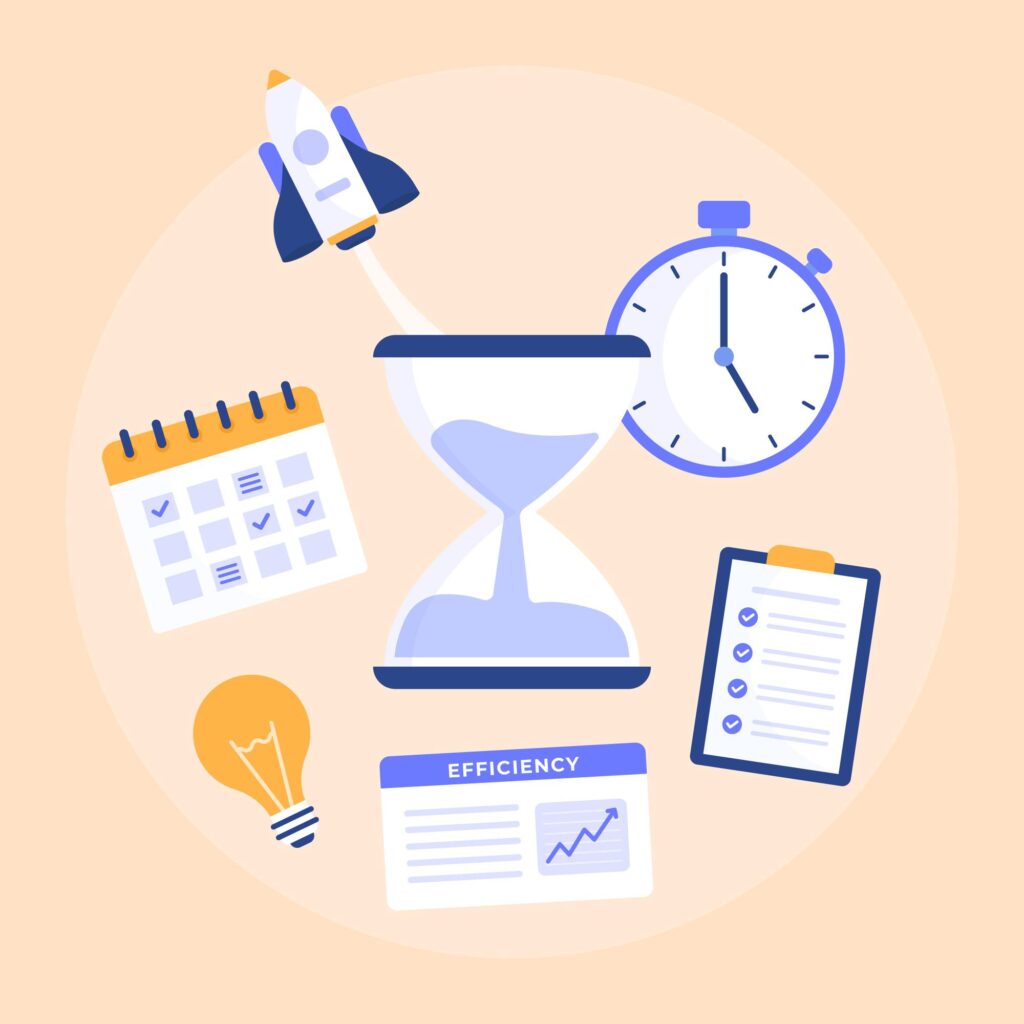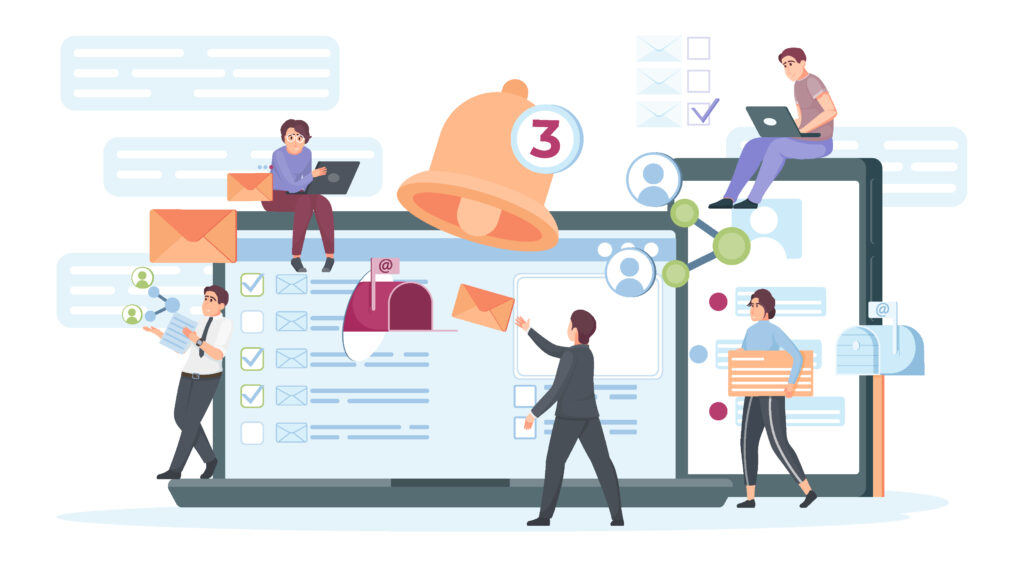Key Takeaways
- Personalization in email marketing means crafting emails in a way that feels like they were made just for you. It goes beyond using your name and involves tailoring the email content to match your interests, preferences, and behaviors.
- Personalization in email marketing increases engagement, enhances the customer experience, improves email deliverability, boosts conversion rates, fosters brand loyalty, provides data-driven insights, and offers a competitive advantage.
- Successful personalized eCommerce email campaigns include product recommendations, abandoned cart reminders, birthday or anniversary offers, and location-based promotions.
In today’s highly competitive e-commerce landscape, standing out from the crowd and capturing the attention of customers is more challenging than ever.
This is where personalization in email marketing plays a pivotal role.
By tailoring email content to the unique preferences, behaviors, and needs of individual customers, businesses can create highly targeted or engaging campaigns that drive conversions and foster long-term customer loyalty.
In this article, we explore the role of personalization in successful e-commerce email marketing, highlighting its importance, best practices for implementation, measurement of success, and real-world examples.
Discover how personalization can transform your email marketing strategy and propel your e-commerce business to new heights.
What do we mean by personalization in email marketing?

Personalization in email marketing means crafting emails in a way that feels like they were made just for you.
It goes beyond using your name and involves tailoring the email content to match your interests, preferences, and behaviors.
For example, instead of receiving a generic email about a sale, a personalized email might show products or offers that align with your past purchases or browsing history.
The goal is to make the email feel more relevant and interesting to you, increasing the chances that you’ll open it, read it, and take action.
It’s like getting a special message that speaks directly to your needs and makes you feel valued as a customer.
Importance of personalization in email marketing

1. Increased engagement
Personalization is crucial for capturing the attention and interest of recipients.
When emails are tailored to individual preferences and needs, they stand out amidst the flood of generic messages.
Personalized subject lines, email marketing graphics, content, and offers make recipients more likely to open the email, read it thoroughly, and engage with the call-to-action.
For example, Penji is an on-demand and unlimited design service upgrading the way you work.
Create a project on their app today which helps in engagement translates into higher click-through rates, as well as increased conversions and revenue for businesses.
2. Enhanced customer experience
Personalization shows that a business values its customers and understands their unique preferences.
By delivering content that is relevant, valuable, and aligned with individual interests, businesses can create a positive and personalized experience for recipients.
This level of understanding fosters a sense of loyalty, trust, and satisfaction, strengthening the customer-business relationship.
3. Improved email deliverability
Email service providers are increasingly focused on delivering relevant and meaningful content to recipients’ inboxes.
They prioritize personalized emails that demonstrate higher engagement rates, as they are more likely to be valued and opened by recipients.
By personalizing emails, businesses can improve their deliverability rates, ensuring that their messages reach the intended audience rather than being relegated to the spam folder.
4. Increased conversion rates
Personalization has a direct impact on conversion rates.
By tailoring email content to recipients’ preferences and behaviors, businesses can present highly targeted offers, recommendations, or incentives that resonate with individual needs.
This personalized approach greatly enhances the likelihood of recipients taking the desired actions, such as making a purchase, signing up for a service, or filling out a form.
5. Enhanced brand loyalty
Personalized emails create a stronger emotional connection between recipients and the brand.
By consistently delivering relevant and tailored content, businesses can foster a sense of exclusivity and care, making recipients feel valued and understood.
This, in turn, leads to increased brand loyalty and advocacy, as recipients are more likely to choose and recommend a brand that consistently provides personalized experiences.
6. Data-driven insights
Personalization in email marketing generates valuable data and insights about recipients’ preferences, behaviors, and interactions.
By analyzing this data, businesses can gain a deeper understanding of their target audience and make informed decisions to further optimize their email marketing campaigns.
These insights can be used to refine segmentation strategies, create more targeted content, and continually improve the effectiveness of personalized email efforts.
7. Competitive advantage
In a crowded marketplace, personalized email marketing provides a competitive advantage.
Businesses that invest in personalization differentiate themselves from competitors by delivering tailored experiences that resonate with recipients.
This sets them apart, attracts attention, and positions them as customer-centric organizations, gaining an edge in acquiring and retaining customers.
Best practices for implementing personalization in email marketing

1. Data collection and segmentation
Gathering relevant data about your subscribers is the foundation of effective personalization.
This includes information such as demographics, past purchase behavior, browsing history, and preferences.
By segmenting your audience based on these data points, you can create targeted campaigns that cater to the specific needs and interests of each segment.
This ensures that your personalized emails are highly relevant and resonate with recipients, increasing the chances of engagement and conversion.
2. Automation and dynamic content
Email marketing automation tools are invaluable for implementing personalization at scale.
These tools allow you to automate the delivery of personalized emails based on predefined triggers or actions taken by recipients.
With dynamic content blocks, you can create email templates that dynamically populate with content based on recipient attributes.
For example, you can display different product recommendations or offers based on a recipient’s previous purchases or browsing behavior.
Automation and dynamic content enable you to deliver highly personalized and timely messages without the need for manual intervention, saving time and effort.
3. A/B testing
To optimize the effectiveness of your personalized email campaigns, it’s essential to conduct A/B testing.
This involves testing different elements within your emails to identify what resonates best with your audience.
For instance, you can test different subject lines, email designs, content variations, or call-to-action buttons.
By analyzing the results and performance metrics, such as open rates, click-through rates, and conversions, you can determine which elements drive better engagement and adjust your strategies accordingly.
A/B testing helps refine your email campaigns, improve overall performance, and maximize the impact of personalization.
4. Personalized recommendations and upselling
Incorporating personalized product recommendations and upselling opportunities within your emails can significantly enhance the personalization experience.
Analyze customer data to identify relevant cross-sell or upsell opportunities based on their purchase history or browsing behavior.
By recommending complementary products or offering exclusive deals based on their preferences, and ensuring a seamless and enjoyable customer experience throughout their journey, you can increase the likelihood of repeat purchases and maximize customer lifetime value.
5. Behavioral triggers and lifecycle emails
Leveraging behavioral triggers and lifecycle emails is another effective personalization tactic.
Behavioral triggers are automated responses triggered by specific actions or events, such as abandoned carts, product views, or email click-throughs.
By setting up automated emails that address these triggers, you can send personalized messages tailored to the recipient’s specific situation and intent.
For example, sending a reminder with a special offer to someone who abandoned their cart can prompt them to complete the purchase.
Lifecycle emails can also be personalized based on the recipient’s stage in the customer journey, providing relevant content and offers that align with their needs and interests.
6. Personalized subject lines and pre header text
The subject line and preheader text are the first things recipients see when they receive your email.
Personalizing these elements by incorporating the recipient’s name or referencing their past interactions with your brand can capture attention and increase open rates.
A compelling and personalized subject line creates a sense of relevance and curiosity, prompting recipients to engage further with your email.
7. Personalized landing pages
Extend personalization beyond the email itself by creating personalized landing pages.
When recipients click on a call-to-action in your email, they should be directed to a landing page that continues the personalized experience.
Tailor the landing page content, offers, and recommendations based on the recipient’s preferences or previous interactions.
Consistency in personalization throughout the entire customer journey enhances the overall user experience and reinforces the message and value proposition presented in the email.
How to measure the success of personalized email marketing

1. Open rate
Tracking the open rate provides insights into the effectiveness of your personalized email campaigns.
It measures the percentage of recipients who actually open your emails.
A higher open rate indicates that your subject lines and personalization efforts are successful in grabbing attention and enticing recipients to explore the content further.
By monitoring open rates, you can assess the impact of your subject line personalization, email timing, and overall email deliverability.
2. Click-through rate (CTR)
The click-through rate measures the percentage of recipients who click on links or call-to-action buttons within your personalized emails.
A higher CTR signifies that your personalized content is engaging and prompts recipients to take action.
By analyzing the click-through rate, you can determine the effectiveness of your email design, content relevance, and call-to-action placement.
A well-optimized click-through rate indicates that your personalized emails are driving recipients to your website, landing pages, or other desired destinations.
3. Conversion rate
Monitoring the conversion rate enables you to assess the effectiveness of your personalized emails in driving desired actions.
This metric measures the percentage of recipients who complete a specific action, such as making a purchase, filling out a form, or subscribing to a service.
A higher conversion rate indicates that your personalized emails are persuasive and compelling, leading recipients to take the desired action.
By tracking the conversion rate, you can evaluate the overall effectiveness of your email content, offers, and personalization strategies in driving tangible results.
4. Customer lifetime value (CLV):
While not directly tied to a single email campaign, measuring the customer lifetime value helps evaluate the long-term impact of personalized email marketing.
CLV represents the total revenue generated by a customer throughout their entire relationship with your business.
By analyzing the CLV of customers who have engaged with your personalized email campaigns, you can determine the overall value and impact of personalized emails on customer retention, repeat purchases, and overall profitability.
5. Return on investment (ROI)
Assessing the return on investment of your personalized email marketing efforts helps determine the financial success of your campaigns.
Calculate the revenue generated or the cost savings achieved as a direct result of your personalized email campaigns.
By comparing this with the costs incurred in executing these campaigns, you can determine the ROI and evaluate the efficiency and effectiveness of your personalization strategies.
This provides valuable insights for optimizing future email marketing initiatives.
6. Feedback and surveys
Gathering feedback and insights directly from recipients is an important way to measure the success of personalized email marketing.
Incorporate surveys or feedback forms within your emails to collect information on the recipient’s satisfaction, preferences, and overall experience.
This qualitative data provides valuable insights into the impact of personalization on the recipient’s perception of your brand, content relevance, and overall satisfaction.
6. Social engagement and sharing
Monitor social engagement metrics to gauge the impact of personalized emails in driving social media interactions, such as likes, shares, comments, and mentions.
High social engagement indicates that your personalized content resonates with recipients to the extent that they are willing to share it with their networks.
This amplifies your brand reach and demonstrates the effectiveness of your personalized email marketing efforts in generating organic engagement and brand advocacy.
Examples of successful personalized email campaigns

1. Product recommendations
Amazon is a prime example of an e-commerce platform that excels in personalized email campaigns.
Their emails suggest products based on a customer’s browsing and purchase history, leveraging algorithms to provide highly tailored recommendations.
By showcasing items related to a customer’s interests and preferences, Amazon increases the likelihood of conversion and encourages repeat purchases.
2. Abandoned cart reminders
Many e-commerce platforms employ personalized email campaigns to recover abandoned shopping carts.
These emails are sent to remind customers about the items they left behind, often including personalized product images, descriptions, and prices.
To incentivize completion of the purchase, the emails may offer exclusive discounts, free shipping, or limited-time promotions.
By personalizing these reminders, businesses can effectively recapture the attention of customers and prompt them to return to their carts and complete the transaction.
3. Birthday or anniversary offers
Retailers understand the importance of celebrating customers’ special occasions.
Personalized email campaigns are frequently used to send exclusive offers or discounts on customers’ birthdays or anniversaries.
For instance, clothing brands may provide a personalized discount code for birthday shopping, while beauty retailers may offer a free gift with purchase.
By acknowledging and celebrating these milestones, businesses strengthen the bond with customers, fostering loyalty and encouraging repeat purchases.
4. Location-based promotions
Personalizing emails based on the recipient’s location adds a layer of relevance and engagement.
Businesses can tailor promotions, events, or store openings to specific geographical regions.
For example, a restaurant chain make a menu and sends via personalized emails to customers in a particular city, highlighting exclusive discounts for their local branch.
By incorporating location-specific information, businesses enhance the personalization experience, making recipients feel more connected to the brand and increasing the chances of conversion.
5. Customer loyalty rewards
Personalized email campaigns can be used to acknowledge and reward loyal customers.
For instance, e-commerce platforms often send personalized emails with exclusive discount codes, early access to sales, or bonus points as part of a loyalty program.
By recognizing and appreciating their loyal customers, businesses nurture long-term relationships and encourage continued engagement and repeat purchases.
6. Post-purchase follow-ups
Personalized emails sent after a customer’s purchase can enhance the post-purchase experience and drive customer satisfaction.
These emails can include personalized order confirmations, shipping updates, and delivery notifications.
Additionally, businesses can go a step further by sending personalized follow-up emails to check on customer satisfaction, provide product usage tips, or offer relevant cross-sell or upsell recommendations based on the customer’s purchase history.
7. Re-engagement campaigns
When customers have been inactive or haven’t made a purchase in a while, personalized re-engagement campaigns can help reignite their interest.
These campaigns can include tailored content, such as recommendations based on their previous purchases, personalized offers, or reminders of their favourite products.
By reminding customers of their past engagement and providing personalized incentives, businesses can encourage them to re-engage with the brand and make a new purchase.
Conclusion
Personalization is the magic wand that can turn your e-commerce email marketing into a roaring success.
By using personalization techniques, you can create email campaigns that feel like they were made just for each customer.
This means higher engagement, more sales, and customers who keep coming back for more.
Whether it’s collecting and segmenting customer data, using automation and dynamic content, or testing and measuring your results, personalization is the key to optimizing your email marketing strategy.
And with real-life examples from top e-commerce platforms, you can see firsthand how personalization can transform your business.
So, jump on board the personalization train, because in the competitive world of e-commerce, it’s the surefire way to stand out, connect with customers, and achieve long-term success.
Get ready to wow your customers with personalized emails that make them feel like VIPs and watch your e-commerce business thrive!
